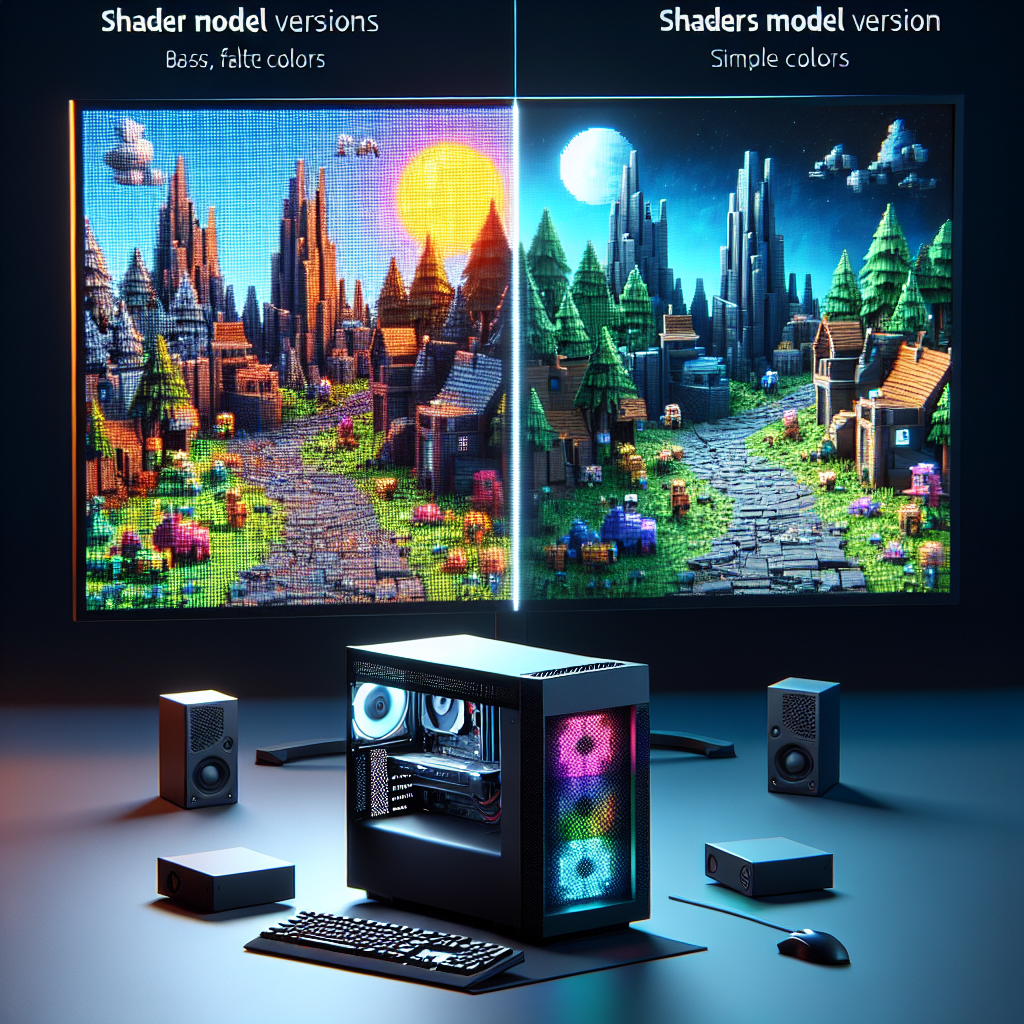Introduction to Shader Models in Gaming Graphics
Shader models, also known as shader versions, are crucial components in the field of gaming graphics. They define a set of features and capabilities that a graphics processing unit (GPU) can support. As gaming technology advances, shader models evolve, bringing more sophisticated visual effects, improved performance, and enhanced game immersion.
Shader models provide a structured way for developers to describe the appearance of both 2D and 3D objects in a digital scene. These models are integral to rendering realistic textures, lighting, shadows, and other graphical elements that make video games visually appealing.
Evolution of Shader Models
Shader models have evolved over the years, correlating with the advancement in GPU technology. The table below outlines significant shader model versions and their corresponding features:
| Shader Model Version | Year Released | Major Features |
|---|---|---|
| Shader Model 1.0 | 2000 | Basic vertex and pixel processing |
| Shader Model 2.0 | 2002 | Improved pixel precision and flow control |
| Shader Model 3.0 | 2004 | Dynamic branching, higher instruction limits |
| Shader Model 4.0 | 2006 | Unified shader architecture, geometry shaders |
| Shader Model 5.0 | 2009 | DirectCompute, tessellation support |
| Shader Model 6.0 | 2017 | Wave operations, advanced compute shader capabilities |
Shader Model 1.0
The introduction of Shader Model 1.0 marked a significant milestone in gaming graphics by enabling basic vertex and pixel processing. This version allowed developers to add simple lighting and texture mapping to their games, providing early forms of visual enhancement.
Shader Model 2.0
Shader Model 2.0 brought enhanced precision in pixel processing and introduced flow control statements like loops and branches. These improvements allowed for more complex shaders, resulting in better realism with effects like bump mapping and per-pixel lighting.
Shader Model 3.0
Shader Model 3.0 expanded on its predecessor by introducing dynamic branching and higher instruction limits. These advancements enabled developers to create more intricate shaders with conditional logic, improving the visual fidelity of games significantly.
Shader Model 4.0
With Shader Model 4.0, the graphical capabilities of GPUs took a substantial leap forward. This version introduced a unified shader architecture, allowing the GPU to efficiently switch between different types of shaders. Additionally, it brought geometry shaders, which enabled real-time generation and processing of additional geometry.
Shader Model 5.0
Shader Model 5.0 continued to push the boundaries by supporting DirectCompute, a feature that leveraged the GPU for general computing tasks beyond graphics. It also introduced tessellation, allowing for the dynamic creation of highly detailed surfaces, thus significantly improving the geometric complexity of 3D models in games.
Shader Model 6.0
Shader Model 6.0 rolled out with advanced compute shader capabilities and wave operations, which allowed for more efficient processing of multiple tasks simultaneously. These improvements facilitated the creation of ultra-realistic visual effects, making the gaming experience more immersive than ever before.
Impact of Shader Models on Gaming Performance
The evolution of shader models has directly contributed to enhanced gaming performance. New shader models usually bring optimizations that leverage the latest GPU architectures, resulting in more efficient rendering pipelines. Additionally, they enable developers to implement more sophisticated graphical effects without drastically impacting the game’s performance.
Visual Quality
Each successive shader model introduces features that enhance the visual quality of games. Advanced shading techniques, realistic lighting, shadowing, reflections, and texture details become more achievable with newer shader models, allowing games to look more lifelike.
Performance Optimization
Newer shader models are designed to capitalize on the latest hardware innovations. This means that they can execute complex graphical computations more efficiently, leading to better frame rates and smoother gameplay, even as visual fidelity increases.
Compatibility and Future Prospects
As shader models evolve, so does the need for compatibility across various gaming platforms. Developers must ensure that their games can run on a range of hardware configurations, from high-end gaming PCs to more modest consoles and mobile devices. This compatibility challenge often requires creating multiple versions of shaders to optimize performance across different hardware.
Looking forward, the role of shader models in gaming graphics is expected to become even more critical. As virtual reality (VR) and augmented reality (AR) applications grow, the demand for real-time, high-fidelity graphics will increase. New shader models will likely continue to push the envelope, providing developers with more tools to create visually stunning and immersive gaming experiences.
Conclusion
Shader models play a fundamental role in the evolution of gaming graphics, driving improvements in visual quality and performance. From the basic capabilities of Shader Model 1.0 to the advanced features of Shader Model 6.0, each version has introduced valuable enhancements that allow developers to create more complex and aesthetically pleasing games. As the gaming industry continues to evolve, shader models will remain at the forefront, enabling new levels of creativity and technological advancement.
